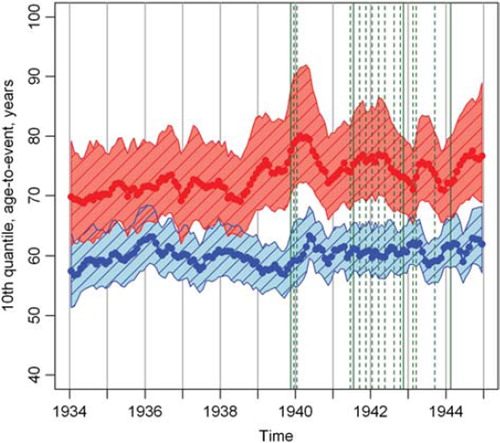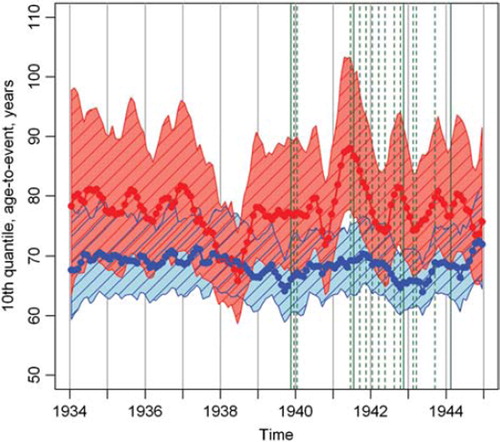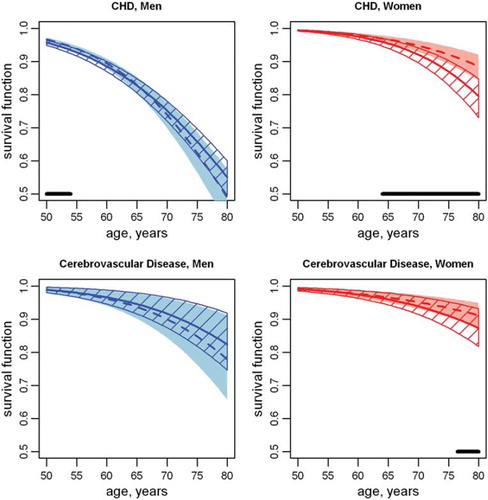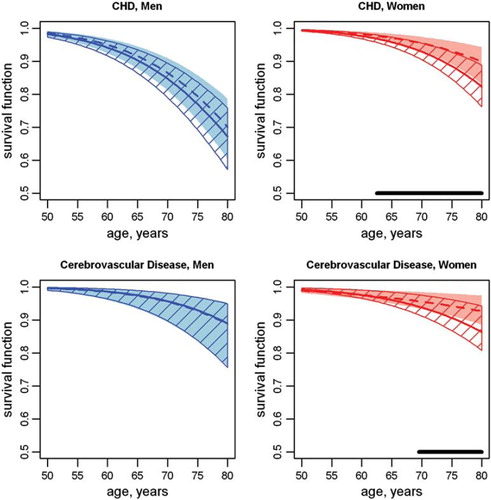Figures & data
Figure 1. The mean posterior 10th quantile of the age-to-event for coronary heart disease based on CAR Weibull distribution fitted separately for men (below) and women (above) with a 95% envelope. The vertical dashed lines indicate “all bombing” dates, including the non-dashed “major bombing” dates.

Table I. Birth characteristics of exposed and unexposed individuals.
Figure 2. The mean posterior 10th quantile of the age-to-event for cerebrovascular disease based on CAR Weibull distribution fitted separately for men (below) and women (above) with a 95% envelope.

Figure 3. Posterior 95% envelopes and mean survival curves of coronary heart disease and cerebrovascular disease adjusted for birth weight, parity and father's occupation, and fitted separately for individuals unexposed (solid line) and exposed (dashed line) to all bombing events. The thick horizontal lines indicate significant differences in survival.

Figure 4. Posterior 95% envelopes and mean survival curves of coronary heart disease and cerebrovascular disease adjusted for birth weight, parity and father's occupation, and fitted separately for individuals unexposed (solid line) and exposed (dashed line) to major bombing events. The thick horizontal lines indicate significant differences in survival.
